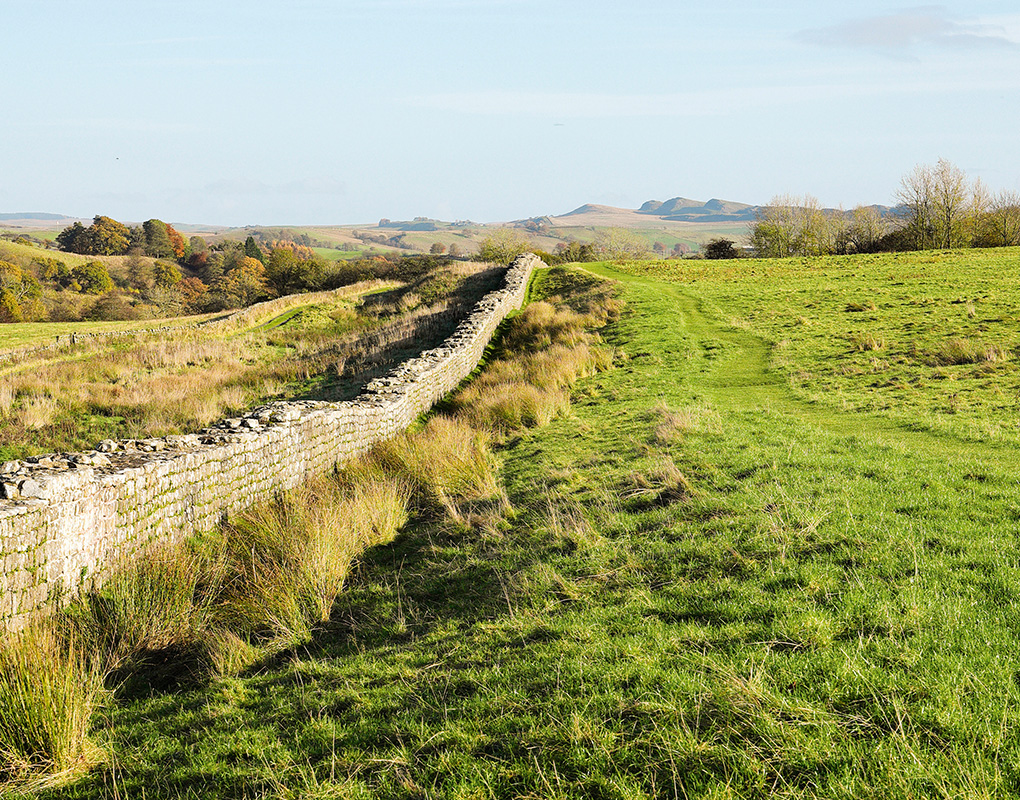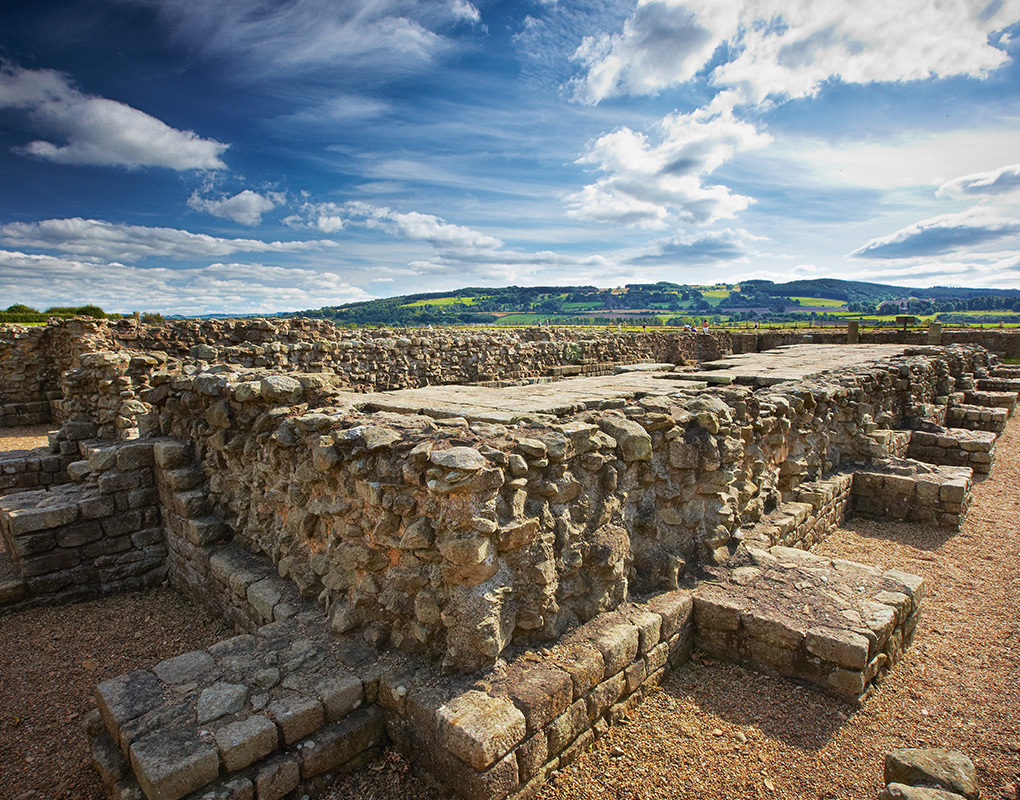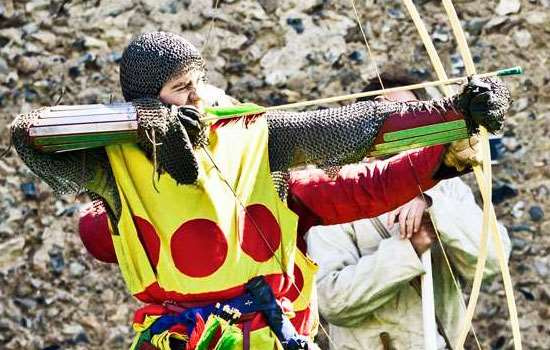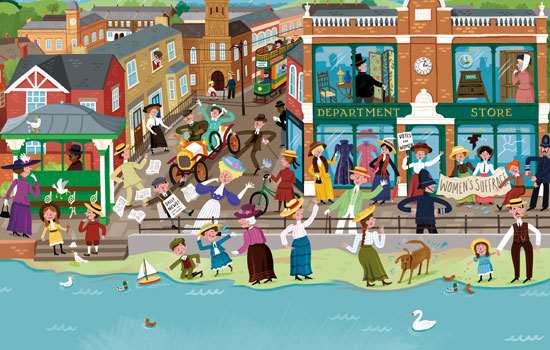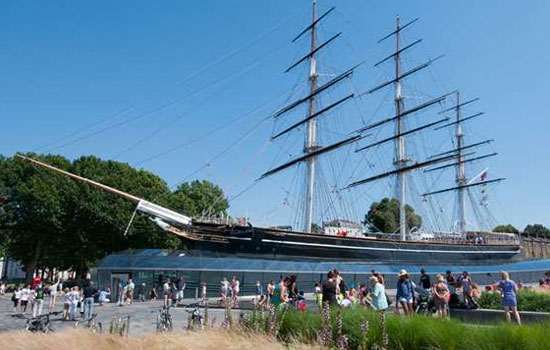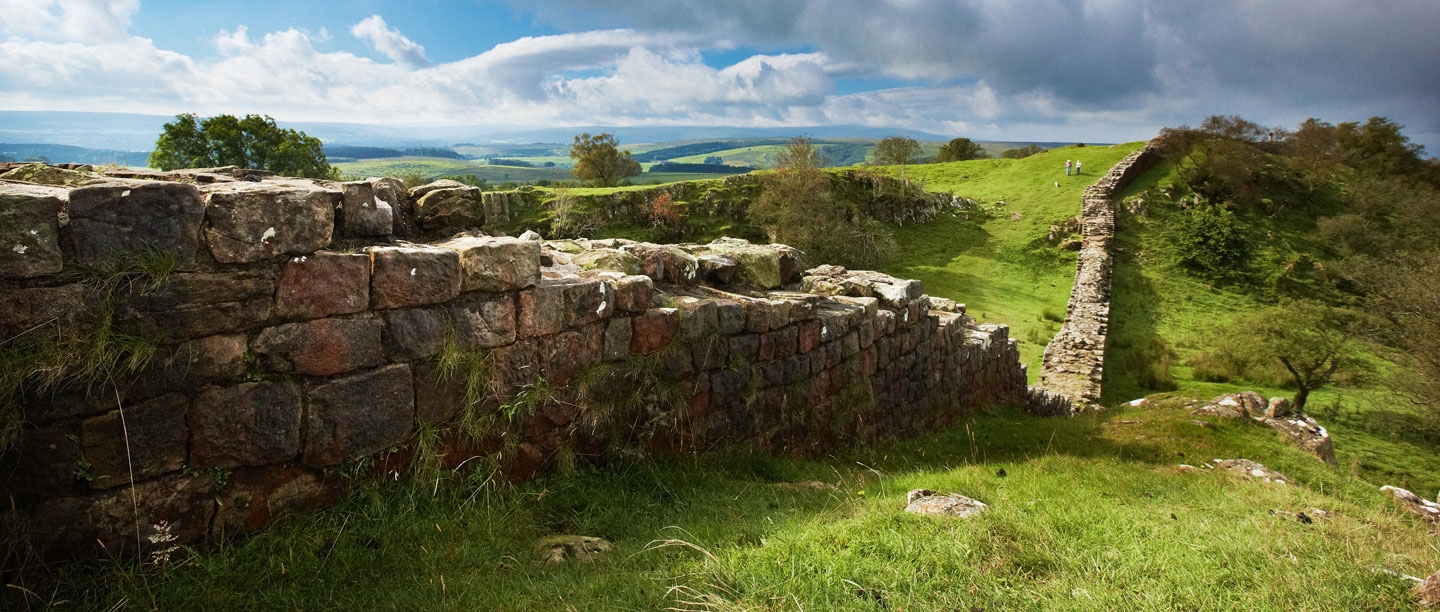
20 Questions Quiz: Hadrian's Wall
Put your knowledge of Hadrian's Wall to the test on the 1900th anniversary of Britain' most well-known Roman relic.
-
1. Which Roman emperor launched a full-scale invasion of Britain in AD 43?
Answer: Claudius
Julius Caesar had previously invaded in 55–54 BC but made peace with his opponents and returned to Gaul. For almost 100 years afterwards, the kingdoms of Britain were kept quiet with gifts and diplomacy, until anti-Roman rulers came to power. The Romans' advance through southern England and Wales was halted from AD 60–70 by the rebellion of Boudicca, queen of the Iceni of East Anglia.
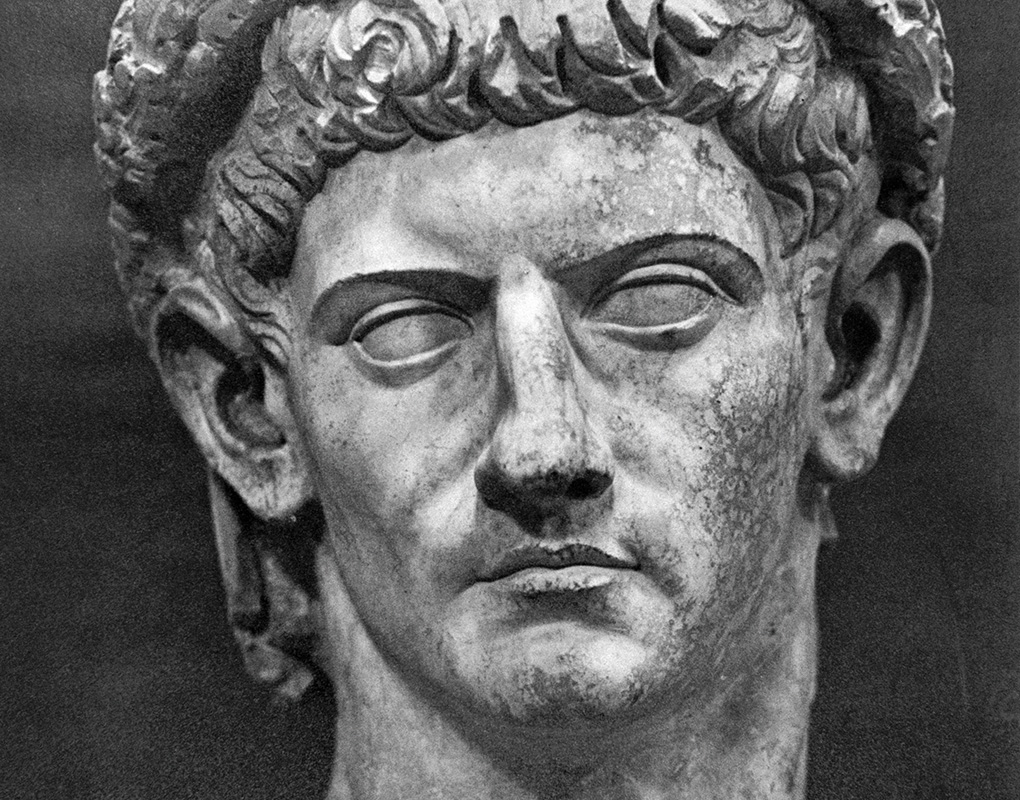
-
2. What was the name of the battle in which the governor Agricola defeated the Scottish tribes in AD 83?
Answer: The Battle of Mons Graupius
After the revolt led by Boudicca was suppressed, the Romans' advance through Britain resumed in AD 70 with the conquest of Wales and the north. Immediately after Agricola's victory at the Battle of Mons Graupius though, troops were pulled out of Britain to deal with invasions on the Danube frontier. As a result, the far north could not be held, and the army gradually fell back to the Tyne–Solway isthmus. It was here that a wall was built.
-
3. The wall was built under the command of Emperor Hadrian. Who, in AD 117, had he succeeded as emperor?
Answer: Trajan
Trajan and Hadrian were two of the Five Good Emperors, who presided over the Roman Empire at its height from AD 96–180. Trajan's reign, from AD 98–117, coincided with the geographical peak of the empire. In particular, he sought to extend the boundaries of the empire to the east, including in Arabia, Armenia, and Mesopotamia.
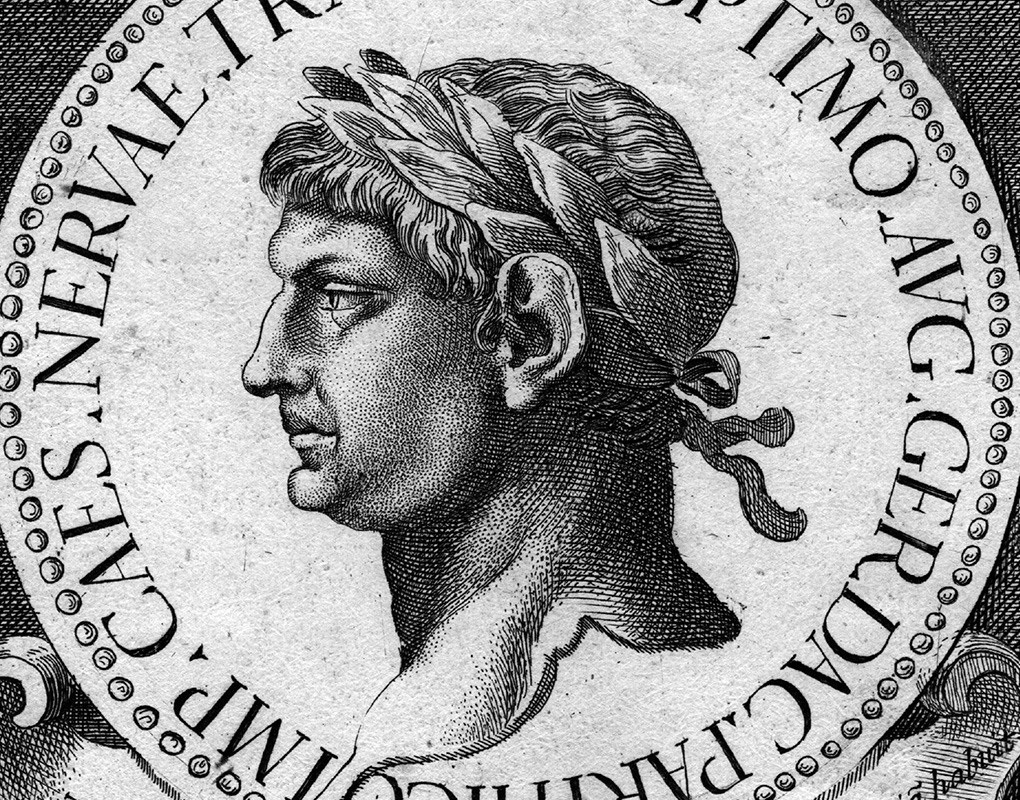
-
4. How long is Hadrian's Wall?
Answer: 73 miles
Hadrian's Wall was 80 Roman miles long, or 73 miles. It crossed northern Britain from Wallsend on the River Tyne in the east to Bowness-on-Solway in the west, and was the north-west frontier of the Roman empire.
-
5. How many working days did it take to complete 100 metres of the wall? A - 490, B - 830, C - 1080
Answer: C - 1,080
The building of Hadrian's Wall probably began in AD 122 and took at least six years to complete. The wall was placed slightly north of the existing line of military installations between the River Tyne and the Solway Firth. Its line was carefully chosen to make best use of the topography.
-
6. In the AD140s, the Roman army moved north to build which wall?
Answer: The Antonine Wall
After the death of Hadrian in AD 138, the emperor Antoninus Pius came to power. He abandoned Hadrian’s Wall and moved the frontier up to the Forth–Clyde isthmus, where he built a new turf wall, named the Antonine Wall, which stretched for 37 miles. It only had a short life though, of about 20 years, before it was abandoned in favour of a return to Hadrian’s Wall.
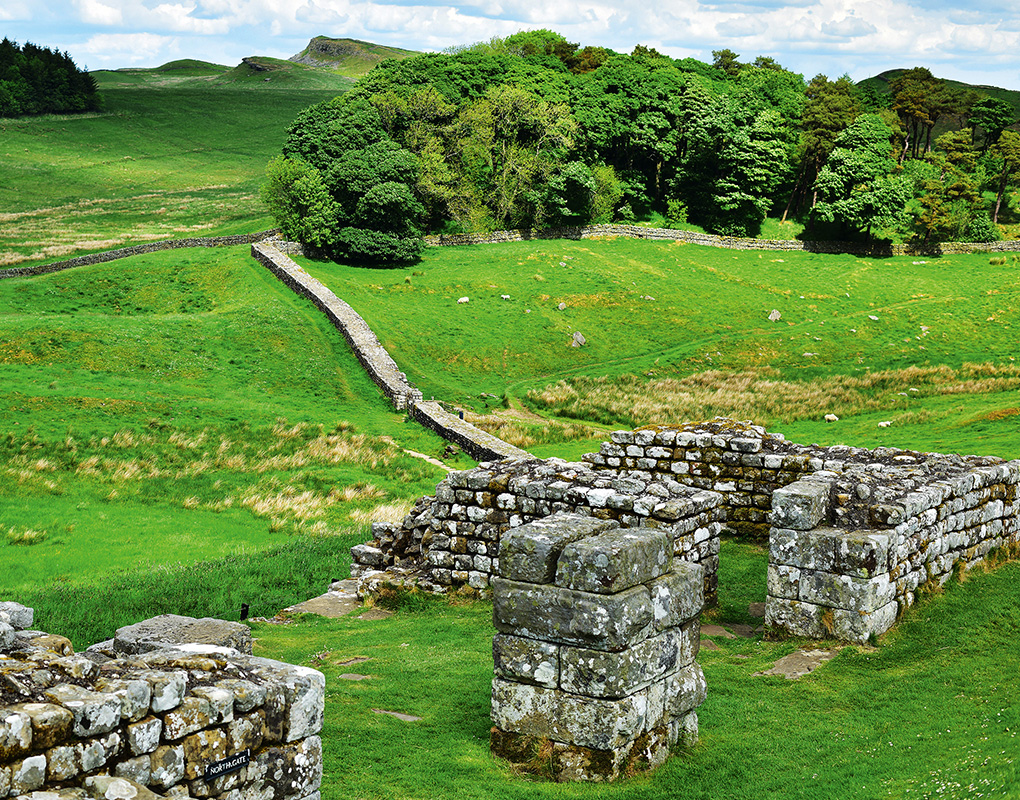
-
7. Who attacked Hadrian's Wall in around AD 180?
Answer: Tribes from the north of the wall
A major war took place shortly after AD 180. According to the Roman historian Cassius Dio, 'The tribes crossed the wall which divided them from the Roman forts and killed a general and the troops he had with him.' Although no details are known of the subsequent fighting, it probably led to changes to the wall, including the abandonment of turrets in the crags sector and a redeployment of the army.
-
8. What is unusual about the western 30 miles of the wall?
Answer: It was originally constructed of turf, not stone
The western 30-mile section of the wall is known as the turf sector. It was discovered in 1895 by the archaeologist Francis Haverfield, who found a portion of a wall made out of clods of earth, lying just to the south of stone remains of Hadrian’s Wall. He traced its line from Appletree to Harrows Scar Milecastle. This was the first step in proving that a turf version of Hadrian’s Wall pre-dated the stone one west of the river Irthing.
-
9. What is the name of the earthwork that lies to the south of the wall?
Answer: The Vallum
The initial plan was that the wall would be made of stone or turf and be fronted by a deep ditch, with a guarded gate (milecastle) every mile and two observation towers (turrets) in between. Before work was completed, 14 new forts were added along with an earthwork, the Vallum, to the south.
-
10. The forts on Hadrian's Wall are thought to be have been occupied until the end of Roman Britain. When was this?
Answer: Circa AD 410
The forts on Hadrian’s Wall had a life of nearly 300 years. Over that time, many modifications took place, including to barrack blocks, headquarters buildings and the commanders’ houses. The latest coins found on Hadrian’s Wall were minted in AD 403–6.
-
11. Can you unscramble the name of this fort on Hadrian's Wall? TRIM DAWN FLOORBOARDS
Answer: Birdoswald Roman Fort
Birdoswald was once an area of bog and forest, and the Romans had to clear and drain the land before building work could begin. The defences of Birdoswald are well preserved and the site is one of the best places to see the first Hadrian’s Wall, built of turf.
-
12. Answer
Answer: Corbridge Roman Town
Corbridge, in modern-day Northumberland, was a vibrant Roman community right up until the end of Roman Britain in the early years of the 5th century. You can still walk through the town's streets today. During an excavation in 1964, the Corbridge Hoard was discovered here – an almost 2,000-year-old Roman time capsule of objects that included the contents of a Roman workshop and many of a Roman soldier's worldly goods, from armour to wax writing tablets.
-
13. What is a basilica excercitatoria, of which an example was found at Birdoswald Roman Fort on Hadrian's Wall?
Answer: An exercise hall
Birdoswald Roman Fort in Cumbria has the only drill and exercise hall ever to have been found in a Roman auxiliary fort. When excavating in preparation for installing new toilets in the 18th-century farmhouse at Birdoswald, archaeologists discovered the remains of a large stone support, which indicated that the Roman building beneath the farmhouse was a large basilica (similar to the nave of a church). The most likely explanation is that it was a basilica excercitatoria. According to the Roman military author Vegetius, such halls were used for training in wet or windy weather.
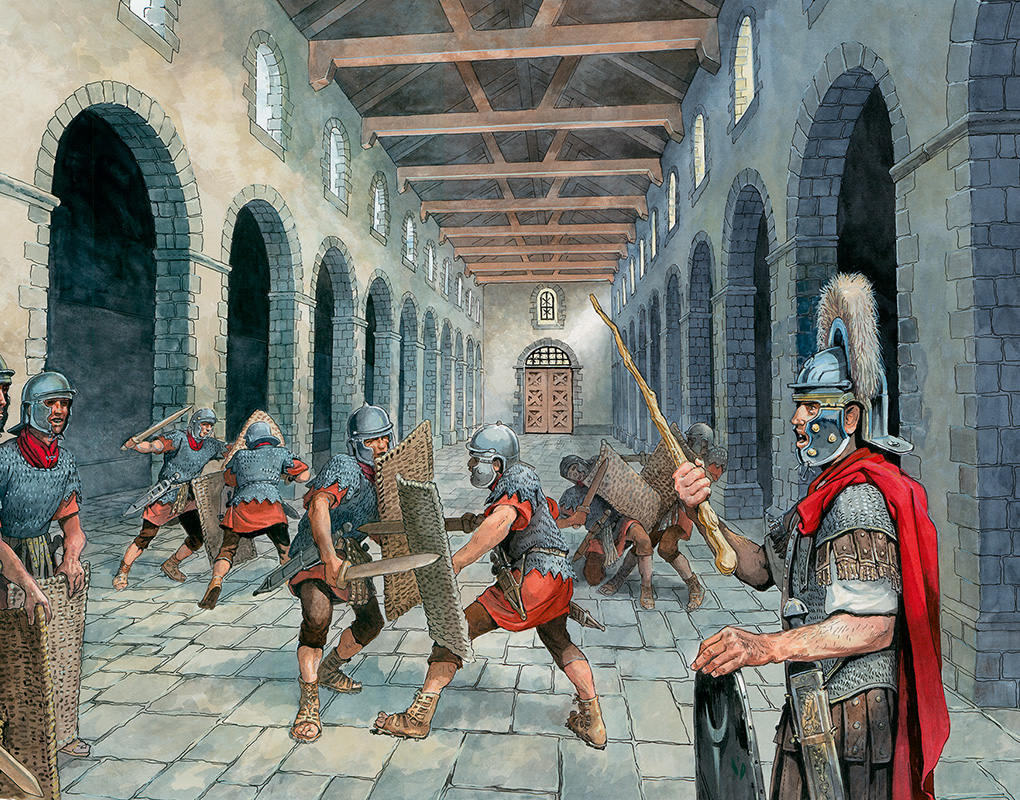
-
14. Which fort on Hadrian's Wall was originally named Vercovicium, which means 'the place of the effective fighters'?
Answer: Housesteads Roman Fort
Situated halfway along Hadrian’s Wall, Housesteads is the most complete example of a Roman fort in Britain, and one of the best-known from the entire Roman Empire. It was built within a decade of AD 122, when work on the wall first began, and was garrisoned by an 800-strong infantry regiment until the end of the 4th century.
-
15. Many soldiers at Birdoswald were from Dacia. Which present-day country makes up most of what was Dacia?
Answer: Romania
In AD 106, the Dacians were defeated by Emperor Trajan. Trajan recruited Dacia’s men to the Roman army as auxiliaries, or non-citizen soldiers. They were then transferred across the empire to Britain, a deliberate attempt to break the connection with their homeland. After first being based at Bewcastle in the north-east of modern-day Cumbria, by AD 200 the Dacian soldiers had made their way further south to Birdoswald on Hadrian’s Wall.
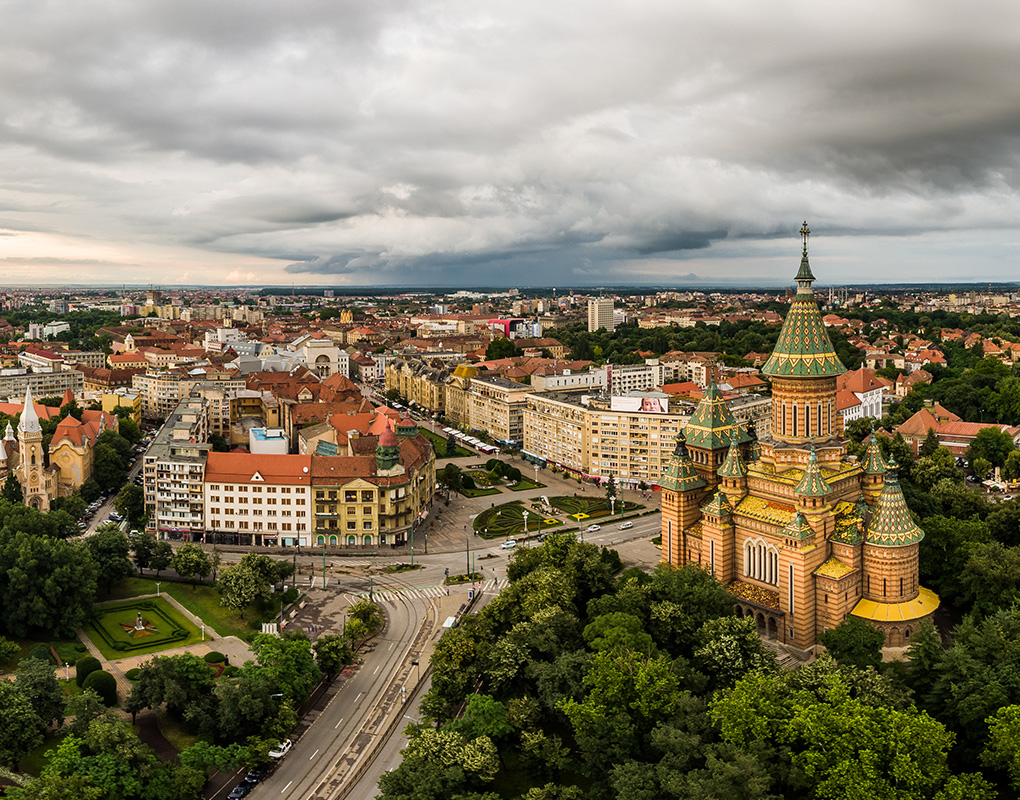
-
16. When did historians first attribute the whole frontier complex to Hadrian? A - 1613, B -1840, C - 1927
Answer: B- 1840
Scientific survey of the wall started in the early 18th century, and the remains began to be uncovered about a century later. It was only in 1840 that the whole frontier complex was first attributed to Hadrian. Modern scientific excavation started in the 1890s.
-
17. Why have no stables been found at Chesters Roman Fort and other Roman cavalry forts?
Answer: Horses were accommodated in the same buildings as their riders
In 1998–2000, the first complete modern excavations of cavalry barracks on Hadrian’s Wall took place at Wallsend and South Shields. As a result of these excavations, it was discovered that barracks were built to house horses in the front rooms and their riders in the rooms behind. This had the military advantage that horses would have been available for immediate deployment.
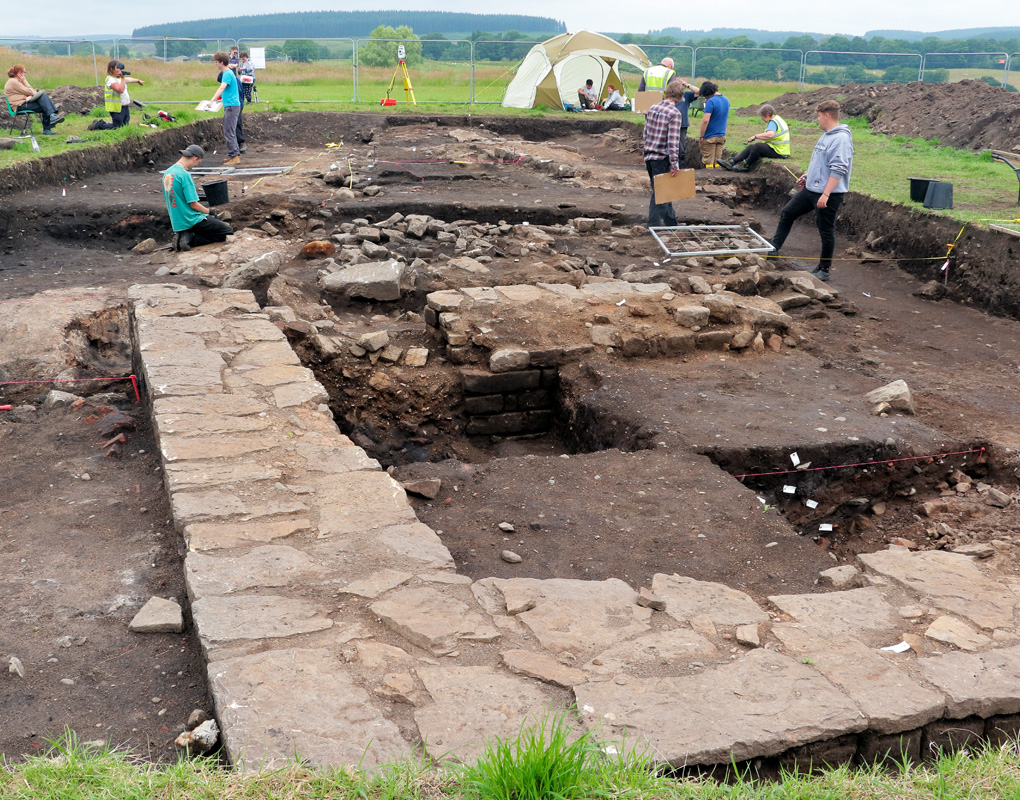
-
18.In 1949, a temple dedicated to which god was discovered at Carrawburgh Roman Fort in Northumberland?
Answer: Mithras
Mithras was originally a Persian deity, eternally at war with evil. According to legend, he captured a bull and slew it in a cave, to release its concentrated power for the good of mankind. When the cult was brought to the Roman Empire from the east, by the army and traders, it came to focus on the figure of Mithras himself. Many ofMithras was originally his followers were high-ranking Roman army officers.
-
19. Who is credited with 'saving' the wall in the 19th century?
Answer: John Clayton
Clayton joined his family's law firm in 1815, at the age of 23, and took over from his father as the town clerk of Newcastle in 1822. He used a portion of his wealth to purchase land that contained Hadrian’s Wall and its forts, milecastles and turrets. He stopped quarrying taking place near the wall, forbade the use of Roman stone for new buildings, moved buildings away from the archaeology, and organised pioneering excavations throughout his life.
-
20. When did Hadrian's Wall become a World Heritage Site?
Answer: 1987
Hadrian’s Wall was made a World Heritage Site in 1987 in recognition of its historical and cultural importance. In 2005 it became part of the trans-national Frontiers of the Roman Empire World Heritage Site, which also includes sites in Germany.
